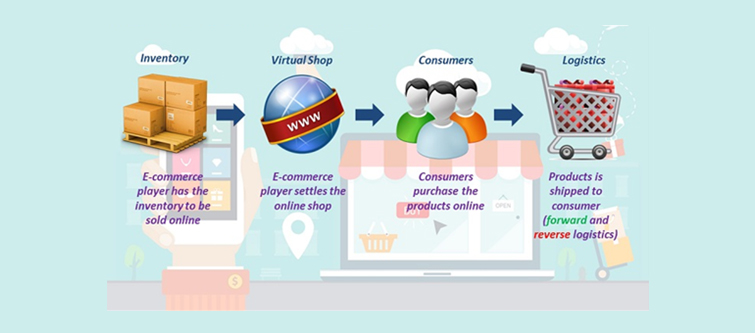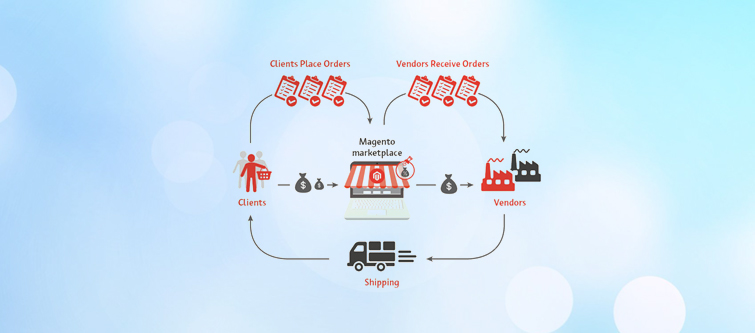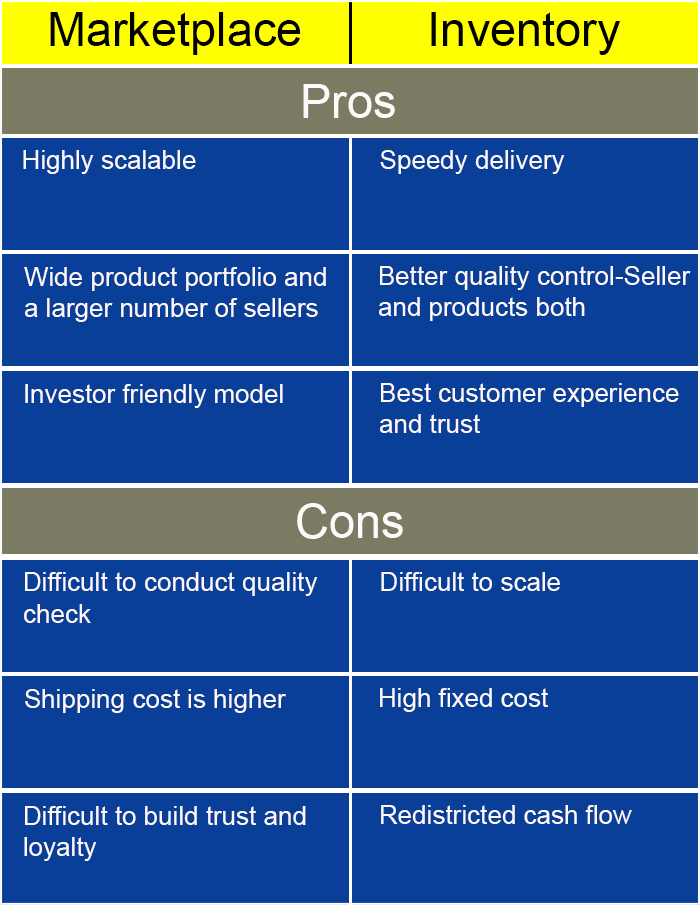Marketplace like Amazon, eBay, Alibaba are known to everyone today. It was a time when these sites had their dominance in their home country only. But looking at the stats for the reach of these sites in the global context shows us the figures that shout their presence in almost every country on the globe.
The globalization of eCommerce sites has only been seen in the past decade when a new model of eCommerce was introduced. It’s the marketplace model of eCommerce. eBay was the first entrant here. A series of development has been noticed in the past few years with the growth of the marketplace model. But what is a marketplace model of eCommerce? Before discussing that, I would like to illuminate a few points on the eCommerce scenario before the introduction of the marketplace model.
What is/was the case before the marketplace hit the floor?
The inventory model of eCommerce has been on the market for long enough. We can say the actual eCommerce started with the inventory model. According to the FDI policy “Inventory model of eCommerce means an eCommerce activity where the inventory of goods and services is owned by the eCommerce entity and is sold to the consumers directly”.
It clarifies the inventory model that all the products are brought directly from the eCommerce firm itself and it is the firm itself who manages the shipping of the items to the consumers. Taking the case of Flipkart which has evolved from an inventory model to multi-vendor model of eCommerce. An Indian eCommerce firm based in Singapore, which was started as an inventory model, later in 2013 it also took the path of the marketplace model.

Earlier before the marketplace joined the game, firms were in direct relation to the consumers. The orders were received by the eCommerce firm through its site interface and then fulfilled only by the firm itself. The firms had a direct partnerships with the delivery services who were responsible for delivering the dispatched item to the consumers. One of the major characteristics of the inventory model was that firms have to manage their own inventory of products in their warehouses and this was also one of the major drawbacks of the inventory model of eCommerce. Managing such a large inventory of products was a risky task and even a complicated one.
What happened when the marketplace finally arrived?
It was the arrival of the multi-vendor model, which completely revolutionized the way eCommerce firms worked by then. In order to extend their reach to the corners of the world, eCommerce firms adopted a new B2B layer between the firms and the consumers where the consumers directly contact the firm but the fulfillment is done by the new layer which is also called as vendors or sellers. The eCommerce sites started accepting the seller/vendor registration and allowed them to sell on the firm’s site.
The official definition laid by FDI for marketplace site says”Marketplace model of eCommerce means providing an information technology platform by an eCommerce entity on a digital and electronic network to act as a facilitator between buyer and seller”
Multi-vendor sites are the firms that allow a huge, distributed population of buyers and vendors to find prices, products and transact with each other on a third-party platform that is trusted, safe, reliable, and transparent. In return, these marketplace sites charge some commission from the sellers on each sale. Some of the multi-vendor platforms like Amazon, Flipkart, and others provide the services and products as fulfilled by the firm itself. If you have noticed, you might see certain lines in the description of certain products like “Fulfilled by Amazon”. These lines mean that the particular product will be delivered to the consumers by the inventory of the firm itself and the delivery will be too handled by the firm itself. If we consider the marketplace model in technical terms then these kinds of products are also called “Admin’s product”.

Marketplace sites provide more options to choose from- It is not only the availability products that matter but the prices of those products also matter. On this site, when vendors see a large number of other sellers also selling the same product at a different price, then it generates a competitive environment that encourages the improvement in product quality, service quality, reduction in price, etc. Therefore marketplace sites are often preferred by the buyers.
Perfect UX for users- The competition does not only exist between the sellers, but also the marketplace sites compete with each other too. This competition encourages the marketplace sites to offer tempting deals and additional offers. In addition to this, marketplace sites keep experimenting with their UI and UX optimization in order to provide the convenient user experience to the buyer so that they remain stacked to their site only.
It takes away the burden of pure inventory- Now the firms do not have to necessarily manage their own inventory. The inventory is maintained by the sellers and also the delivery in most of the cases. There are certain sites that operate as hybrid ones and manage their own inventories too. However, the pure form of the marketplace does not include inventory management by marketplace firms.

This model is overall a new trend which was introduced a long ago but has gained popularity in the past few years. With some of the pros, it also has its cons, but overall it is still in a developing phase where new ideas and innovation are introduced each day. PrestaShop Marketplace module is a similar innovation by knowband that can easily convert an inventory model PrestaShop site to a marketplace site. You can find more about how to convert an eCommerce store into a marketplace site in “How to get a marketplace site in 8 easiest steps?“.
Liked This? You’ll Like These Too
- Chicken-and-egg: problem of marketplace startups- 6 tips for building your own
- 5 revenue generation models multi-vendor marketplaces can use
- 5 Ways to Increase Revenue on MarketPlaces
- A major push to the FDI in online marketplaces and what its actually means
- Ingredients for starting a Marketplace site on Magento



